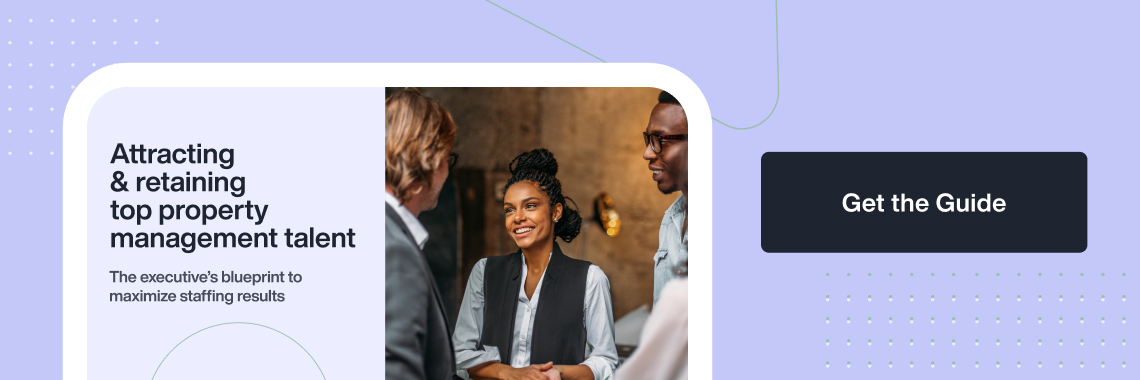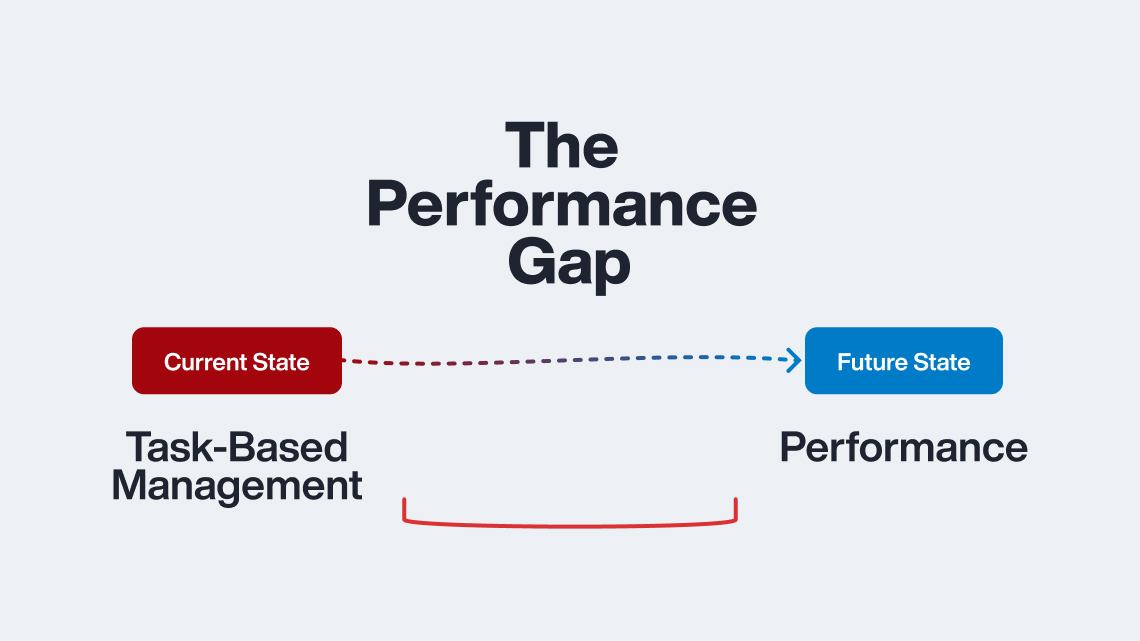Published on May 8th, 2023
By Brittany Benz
Thanks to a historically tight labor market paired with rapid shifts in real estate trends, property management and community association management businesses are finding it harder than ever to hire and keep employees.
In fact, the Foundation for Community Association Research found that 97% of association management executives and hiring teams are seeing a shortage of community managers, and recent AppFolio data shows that 74% of property management professionals cite HR, staffing, and recruitment as one of their top three challenges.
In addition, employees’ needs have shifted drastically over the last several years. Nearly 50% of association management CEOs and hiring managers say candidates now seek a better work-life balance, flexibility in hours (24%), and the option to work remotely (19%). At the same time, property management professionals say they want better salary (45%), less stress (36%), and better benefits (25%).
With more open positions than candidates, community association management and property management companies are facing challenges to build their workforce. To help solve this, organizations need to start by reevaluating their hiring and retention process in order to find and keep top talent. Keep reading for 7 ways your business can enhance its staffing strategy and stand out from the competition.
1.) Ask for feedback on current hiring processes
Before implementing any new recruitment or retention strategies, take an honest look at your current hiring processes to see where it may be falling short. Start by asking current employees and new hires for feedback, both with your own or other hiring experiences they’ve been through. With honest opinions and ideas, you can more closely align your organization’s approach to candidates’ expectations. Understandably, some team members may be hesitant to share candid feedback, so consider using anonymous surveys if you find you’re not getting the depth of insights you need.
2.) Put your company culture first
When it comes to attracting and retaining top talent, your company’s culture can be a make-or-break factor. Based on results from AppFolio’s Hiring and Retention Report, 80% of satisfied employees say they enjoy their company’s culture. When it comes to unsatisfied employees, only 32% say the same. Furthermore, the Foundation for Community Association Research also confirmed that the top two reasons community managers say they would leave a management company are because of a toxic work environment and an unpleasant company culture.
Fortunately, there are many ways to develop your company culture. Steve Cadigan, Talent Strategist and Company Culture Expert and LinkedIn’s first Chief HR Officer, says the best place to start is by answering the question “Why does someone want to work in your organization?” By understanding the why, you’ll be able to better understand your culture and prioritize developing it.
3.) Create space for more meaningful work
Recent AppFolio survey data reveals that 40% of employees’ time is spent on what they believe is “busywork.” However, by automating and streamlining repetitive, tedious tasks such as manual data entry, accounts payable, and mailings, you can help reduce employee turnover. Removing unfulfilling tasks from your teams’ to-do lists allows them to focus on more meaningful projects and high-value tasks. It can also help shift them away from being task-oriented and tactical; this creates the time and capacity for employees to concentrate on strategic big-picture efforts that lead to greater long-term benefits for your business.
4.) Provide better work-life balance with flexibility
Remote and hybrid work environments are here to stay. For team members who do not have to work in one fixed place every day, allow flexibility by offering more robust work options. If you don’t already have technology in place that enables your employees to complete tasks and communicate remotely, consider adopting a fully mobile management software. Look for one that allows all employees to connect so work remains transparent and seamless, even if it’s performed outside of a traditional office setting.
5.) Promote career development and team growth
More than 42% of association management professionals say a lack of opportunity for advancement would be a primary reason to quit. Additionally, 28% say that their employer not covering costs for professional development, including continuing education and credentials, would cause them to leave their management company.
Show team members you care about their development by investing in opportunities to grow their skills and expand their industry knowledge through relevant training courses, certifications, and classes. Be sure to set up regular one-on-one meetings and annual performance reviews to understand individual career goals and help employees create a path to reach them.
6.) Take a multi-channel recruitment approach
The wider the net you cast to recruit new hires, the more applicants you’ll be able to reach. Place ads on your website and job sites such as Indeed.com and LinkedIn. Don’t forget to spread the word offline by attending job fairs and networking events and asking top performers on your team for any referrals who may be a great fit.
7.) Make onboarding easy
New employees can quickly become overwhelmed and frustrated if onboarding isn’t clear or they don’t have access to the right information. Simplify the process by creating a dedicated onboarding plan that includes detailed instructions and steps for how to complete each workflow. Instead of having new hires try to learn the onboarding materials by themselves, have someone guide them through and help answer questions. Digitizing your onboarding materials can also help standardize the entire training process, making it easier and more consistent for every new hire.
Now is the time to rethink your hiring and retention strategy
More than ever, it’s important to evaluate your hiring and retention strategy. If you don’t, you could end up losing valuable talent to the competition. In addition, being short-staffed can negatively impact other aspects of your business — from customer service to overall productivity — and contribute to employee burnout and turnover.
For community association and property management companies that aren’t actively recruiting today, now is still the right time to take a fresh look at your hiring and retention strategy. That way, when the time does come to build up your teams, you’ll be better prepared to stay competitive and attract top talent.
Download our free guide below for more insights on how to fine-tune your hiring and retention strategy.










Comments by Brittany Benz